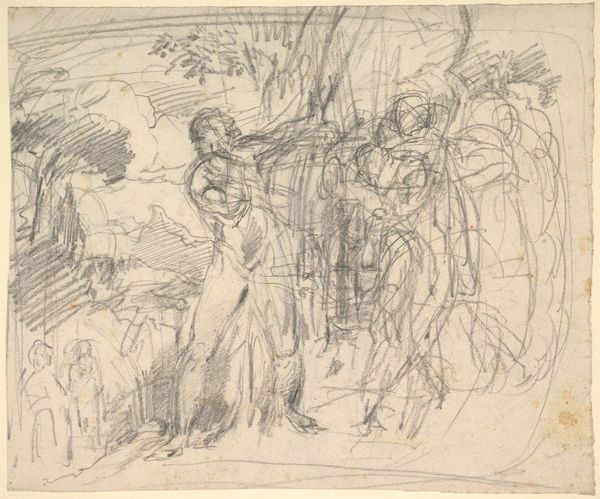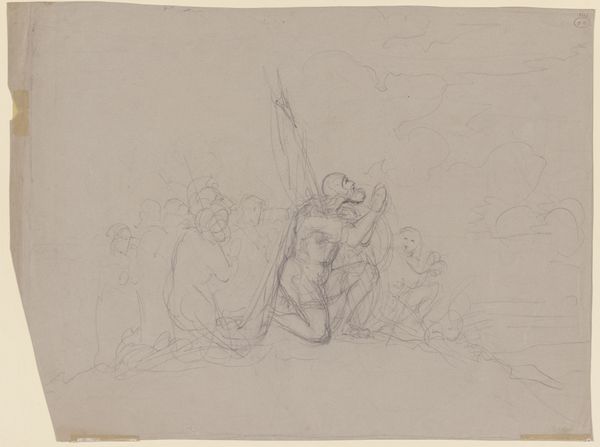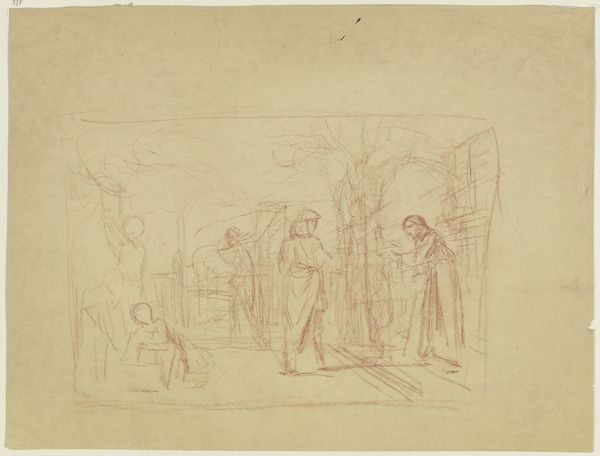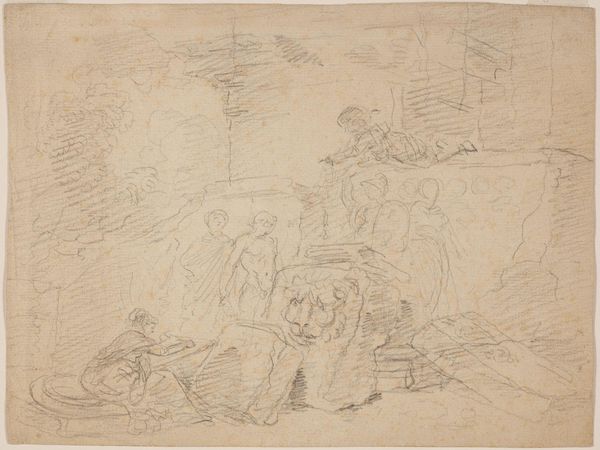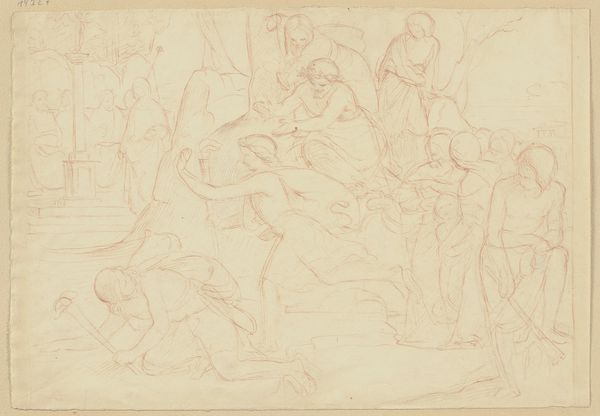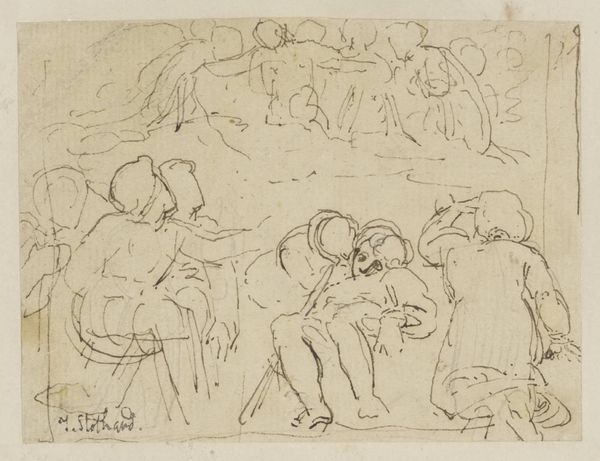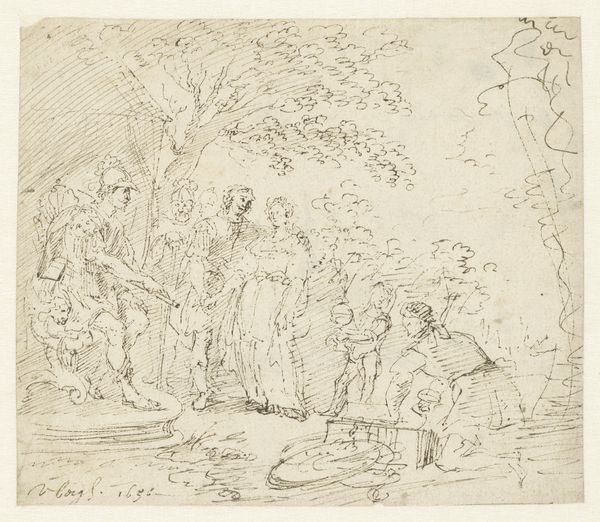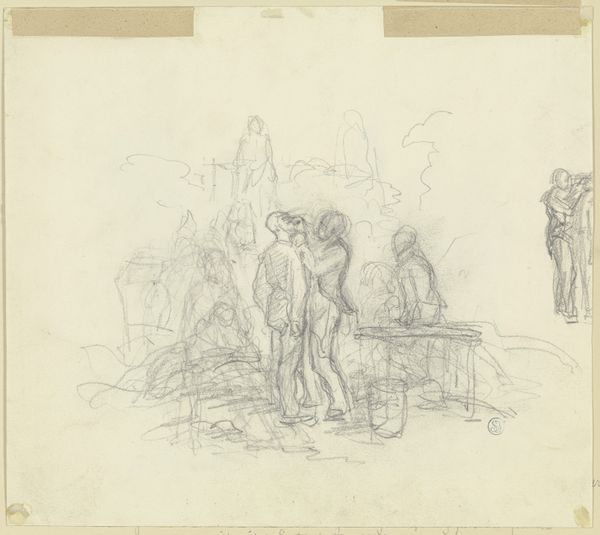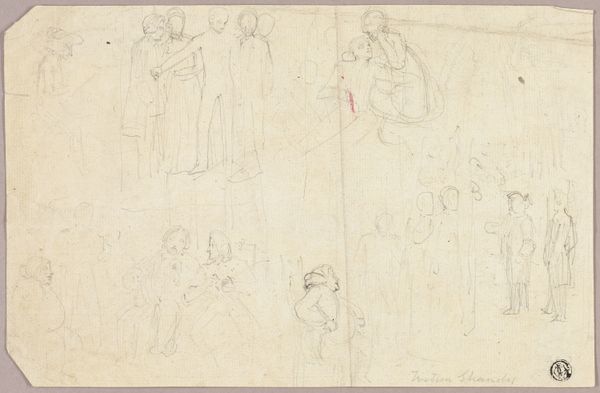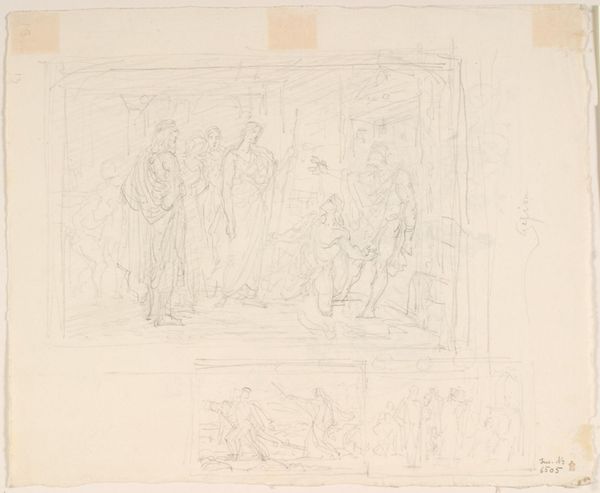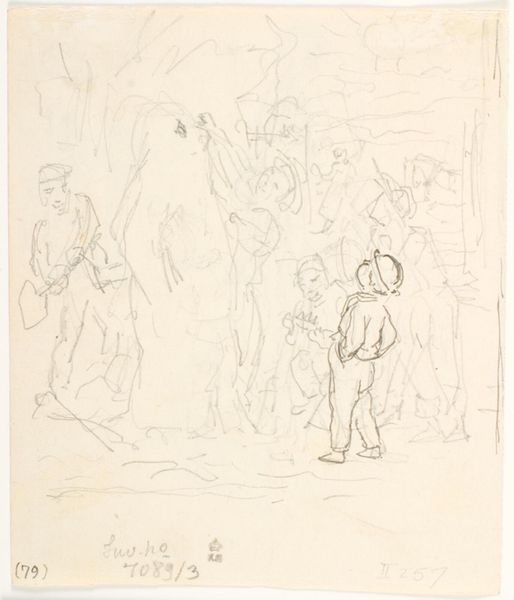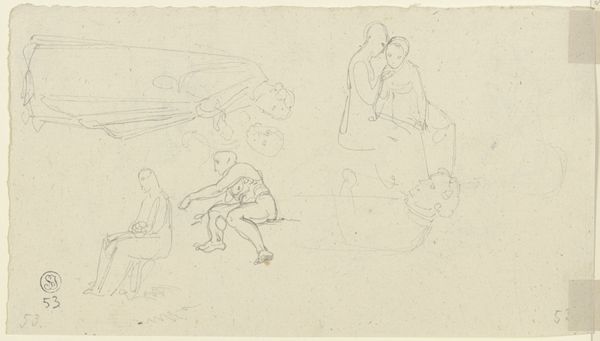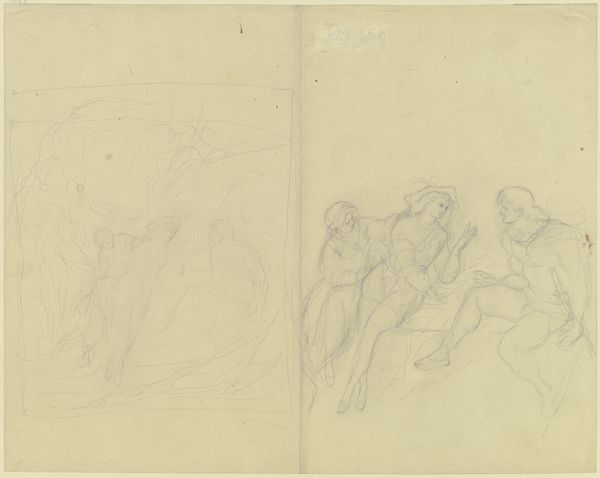
drawing, graphite
#
portrait
#
drawing
#
neoclassicism
#
figuration
#
15_18th-century
#
graphite
#
history-painting
#
academic-art
Copyright: Public Domain
Curator: Let's take a look at this graphite drawing from 1792 called "Skizzenhafte Figurenstudien," or "Sketchy Figure Studies," by Johann Peter Neef. It resides here at the Städel Museum. What are your initial thoughts? Editor: A preliminary impression? Well, it feels quite sparse and ethereal, almost ghostly, the figures barely sketched upon the page. The lack of clear definition creates an overall mood of…transience. Curator: Indeed. What strikes me is Neef's handling of academic art conventions during that period. We can discern the artist grappling with representation and the sheer labor inherent in figure drawing. Editor: From a formal perspective, notice how Neef organizes these figure studies—a cluster of individuals engaging in ambiguous scenarios. The composition feels like a visual language he is actively developing, almost like an alphabet for grander narrative paintings. Curator: Exactly! This brings up interesting questions about the relationship between art as work versus art as some intellectual product, you know? These studies imply preparation for history painting, revealing academic processes of artistic creation. Editor: Do you notice, also, the ways he implies volume with minimal shading, mostly outlines delineating form? It has that crisp Neoclassical air of deliberate draftsmanship. And these studies have a powerful tension between implied movement and frozen gesture. Curator: Right. Neef isn't just representing people; he's working out how to convey human stories within that Neoclassical language. We gain access to artistic knowledge and craft and that alone provides significant historical information. Editor: True. Looking again, I appreciate how Neef achieves such balanced asymmetry and clarity with his spare materials and delicate pressure. Curator: Studying “Skizzenhafte Figurenstudien,” reveals artistic work in its making and how historical narratives are made out of the production processes involved with labor and materials. Editor: I leave here thinking about the relationship between sketches, finished painting and the many, barely seen ideas behind its genesis.
Comments
No comments
Be the first to comment and join the conversation on the ultimate creative platform.
